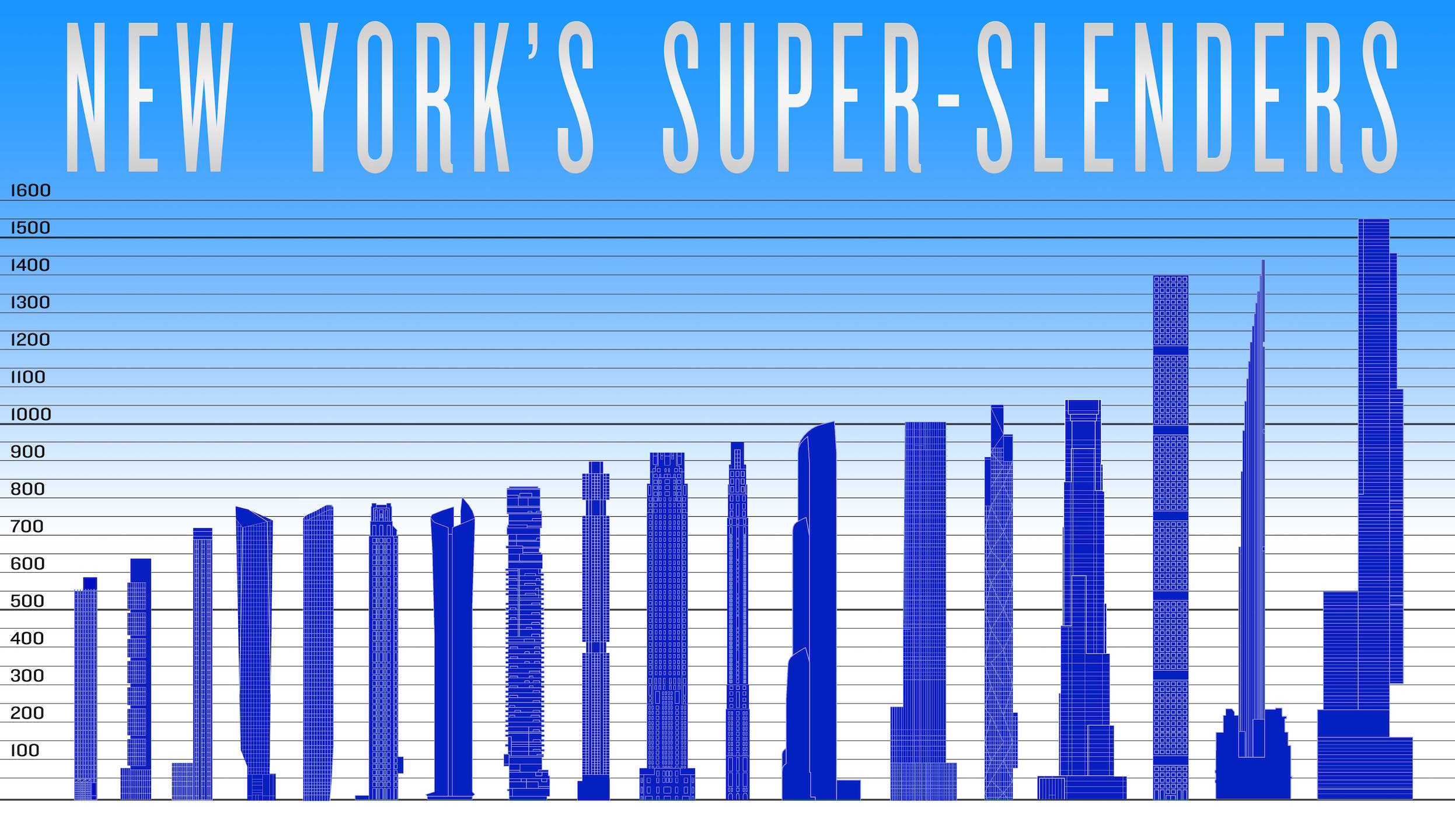Located in New York City, the world's first and foremost vertical metropolis, The Skyscraper Museum celebrates the City's rich architectural heritage and examines the historical forces and individuals that have shaped its successive skylines. Through exhibitions, programs and publications, the Museum explores tall buildings as objects of design, products of technology, sites of construction, investments in real estate, and places of work and residence. For a description of the gallery and for photos of the space, please visit our Photo Slideshows page.
The Skyscraper Museum is located in lower Manhattan's Battery Park City at 39 Battery Place. Museum hours are 12-6 PM, Wednesday-Sunday.
General admission is $5, $2.50 for students and seniors. Click here for directions to the Museum. All galleries and facilities are wheelchair accessible.
CURRENT EXHIBITION
TEN & TALLER, 1874-1900
Through April 2017

TEN & TALLER focuses on New York’s earliest “skyscrapers,” surveying every building in Manhattan of ten or more stories – 250 in all – from the all-masonry “skyscrapers” of the mid-1870s to the standardized steel skeletons at the turn of the twentieth century. The exhibition maps and graphs their location, uses, and heights, tracing an urban development of the city’s commercial expansion and vertical rise.
UPCOMING PROGRAMS
Wednesday, February 1, 2016 6:30-8:00 pm
Stefan Al Book Talk
Mall City: Hong Kong's Dreamworlds of Consumption
University of Hawaii Press, 2016

In his new book, MALL City: Hong Kong's Dreamworlds of Consumption, Stefan Al analyzes Hong Kong as the world’s laboratory of vertical urbanism. The city continues to build ever-higher-density mega-complexes of residential and office towers standing on a podium shopping mall, often integrated with railway infrastructure. These podium-tower developments are cities in and of themselves, accommodating up to tens of thousands of people who live, work and play within a single structure. Stretching up to 26 stories and incorporating stunning vertical atria with dynamic “expresscalators,” these complexes have become one of Hong Kong’s basic units of urban development, like the skyscraper is of New York City. Highly efficient urban forms, they also set in stone a culture of consumerism.
Stefan Al is an architect and urban designer. An Associate Professor of Urban Design at the University of Pennsylvania, he teaches courses and studios on Urban Design and co-teaches, with Jonathan Barnett and Gary Hack, an online Coursera class "Designing Cities" that reaches more than 65,000 students. A leading expert on urbanization in developing countries, high-density cities, and cities of spectacle and entertainment, Als has authored and edited numerous books, including Factory Towns of South China, Villages in the City, Mall City, and Macau and the Casino Complex, as well as a recent work on Las Vegas, The Strip. Stefan Al holds a doctorate in City and Regional Planning from UC Berkeley, an M.Arch. from The Bartlett, and an M.Sc. from Delft University of Technology.
The Skyscraper Museum offers 1.5 LUs for AIA Members for this program.
All book talks are free and open to the public. The gallery opens at 6:00pm.
All guests must RSVP to programs@skyscraper.org to assure admittance.
Wednesday, February 1, 2016 3:00 pm
Curator's Tour
Director and curator Carol Willis will lead a curator's tour of the museum's new exhibition TEN & TALLER. Curators tours are free with admission. No RSVP required.
UPCOMING FAMILY PROGRAMS
HEARTS & TOWERS: VALENTINE'S DAY CARD CREATIONS
February 11
10:30- 11:45
Give your parents or your playground crush a one of a kind card with a homemade skyscraper. The only thing taller than a skyscraper is your love for that super someone! Form follows function and my heart follows you! All Ages. RSVP required.
Click here to read Director Carol Willis's 2016 Director's Report.
A 3-D CBD: How the 1916 Zoning Law
Shaped Manhattan's Central Business Districts

1939-40 NYC Department of Finance tax lot photographs of the Garment District, showing the distinctive setbacks created by the 1916 zoning law. From left to right: 345-351 W. 35th Street; 347-351 W. 36th Street; 247-255 W. 38th Street.
This essay, published online on July 25, 2016, to mark the precise centennial of the passage of the New York City Zoning Resolution on July 25th, 1916, is a revised and updated version of a 1991 conference paper and subsequent chapter of a 1993 book, Planning and Zoning New York City: Yesterday, Today, and Tomorrow. Organized by the New York City Department of City Planning, the conference celebrated the 75th anniversary of the zoning law with a symposium on the history and future of planning in New York City. Read the final report here
Click here to read the essay

The Skyscraper Museum has created a new web project that explains an emerging form in skyscraper history that has evolved in New York over the past decade: the super-slender, ultra luxury residential tower. These pencil-thin periscopes — all 50 to 90+ stories — use a development and design strategy of slenderness to pile their city-regulated maximum square feet of floor area (FAR) as high in the sky to as possible to create luxury apartments defined by spectacular views.
Click here to view NEW YORK'S SUPER-SLENDERS
JOIN OR MAKE A DONATION TO THE SKYSCRAPER MUSEUM
The Museum is a participating member of the Downtown Culture Pass.

